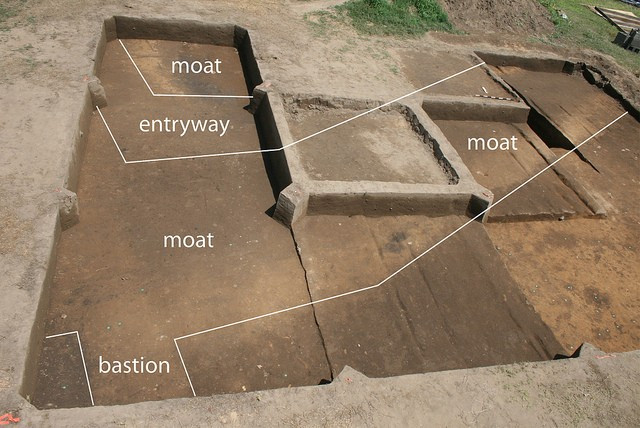First European Fort in US Discovered in Appalachians
Archaeologists uncover 500-year-old European fort and huge insight into start of US colonial era

The earliest European fort ever found in the US has been discovered in the Appalachian Mountains.
Remains of the fort were found by a team of archaeologists from the University of Michigan and date from the 1500s.
The Fort San Juan was built by Spanish captain Juan Pardo in the foothills of the mountains in 1567. This is almost two decades before Sir Walter Raleigh set up the 'lost colony' at Roanoke and 40 years before the Jamestown settlement established England's presence in the eastern region of the country.
Robin Beck, an archaeologist working on the site, said the site, which is around 300 miles from the Atlantic coast, had a violent and short history.
"Fort San Juan and six others that together stretched from coastal South Carolina into eastern Tennessee were occupied for less than 18 months before the Native Americans destroyed them, killing all but one of the Spanish soldiers who manned the garrisons," Beck said.
The site of the colony was near the Native American town of Joara, in North Carolina, which flourished between 800 and 1500.

The team began excavating the site in 2004, finding houses occupied by Spanish soldiers. However, the fort itself could not be found and remained a mystery until last month.
Christopher Rodning, from Tulane University, said they came across the fort by chance while trying to learn more about a mound built by the people of Joara: "Instead we discovered part of the fort. For all of us, it was an incredible moment," he said.
The excavation showed sections of the fort's defensive moat, a corner bastion and a gravelled surface that would have formed an entryway to the garrison.
It was a large V-shaped fort and the moat was 15ft across and 5.5ft deep, the archaeologists said. At the fort, they discovered Spanish iron nails and tacks, majolica pottery and an iron clothing hook that would have been used for attaching sword scabbards to belts.
San Juan was the first and largest garrisons founded by Pardo. He was trying to colonise the American South and was looking for gold. However, he never found it, despite there being an abundance of gold that was eventually found by settlers in the early 1800s.

Had Pardo managed to find the gold, Spain would have launched a full-scale colonial invasion of the area and England would have struggled to establish a foothold at Jamestown.
David Moore, from Warren Wilson College, said: "Spain's failure created an opening that England exploited at Jamestown in 1607, when America's familiar frontier narrative begins. For Native Americans, though, this was the beginning of a long-term and often tragic reshaping of their pre-colonial world."
Explaining why Pardo was forced out of the area after a such a short time, the researchers say it was probably a simple misunderstanding.
"The soldiers believed that when their gifts were accepted, it meant that the native people were their subjects," Beck said.
"But to the natives, it was simply an exchange. When the soldiers ran out of gifts, they expected the natives to keep on feeding them. By that time, they had also committed what Spanish documents refer to as indiscretions with native women, which may have been another reason that native men decided they had to go. So food and sex were probably two of the main reasons for destroying Spanish settlements and forts."
© Copyright IBTimes 2025. All rights reserved.




















